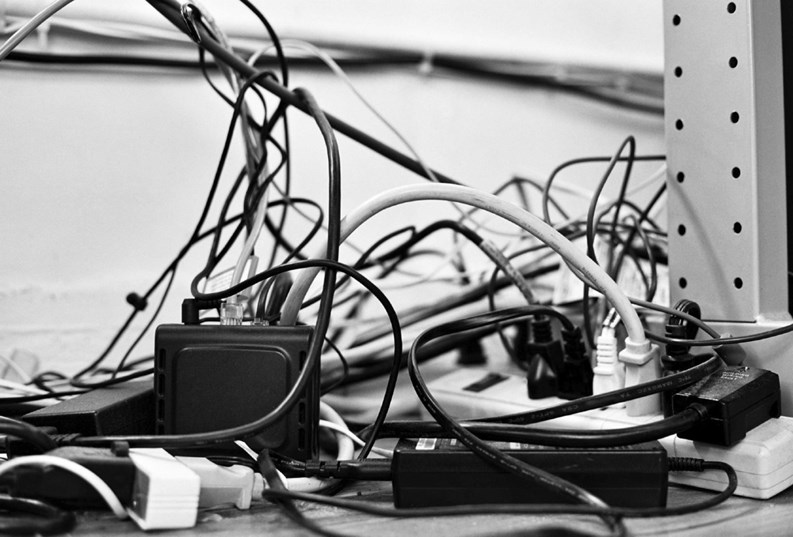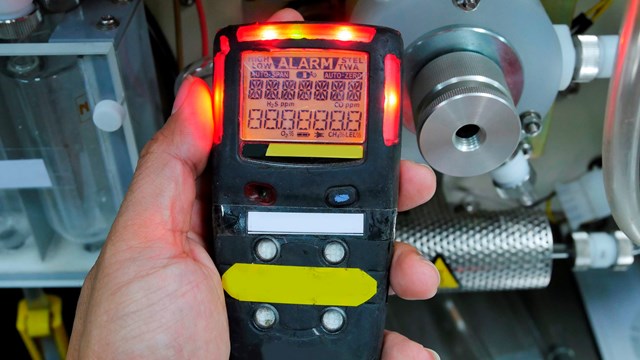Whether it affects a small portion of one unit or the entire association, a fire is easily one of the most devastating and destructive events that can happen in any multifamily building. New technology and current regulations have made fires easier to prevent, control and extinguish, but residents and building staff still must be educated about what to do in an emergency situation, as well as how to prevent a fire from occurring in the first place.
Fire Facts
Approximately 9,000 to 10,000 fires break out each year in New York City, according to Dolores Domenick of Master Fire Prevention Systems, Inc. in the Bronx. The primary causes of fires in homes include electrical issues, cooking and simple carelessness. “Carelessness” includes things like smoking in bed, using illegal propane or kerosene heaters and placing heaters to close to flammable materials, says Domenick.
Domenick points out that that number might not be entirely accurate however, as many small fires, or those that do not trigger a building- or system-wide alarm, often go unreported.
“…A lot of them are not reported,” agrees Ray Weinstein, president and chief executive officer of Croker Fire Drill Corp. in Islip Terrace, New York. “Sometimes if it’s contained and the alarm never went off, it might not be reported. Normally when an apartment fire is reported, the alarm bells are activated and it goes to fire department or alarm monitoring company. Those have to be reported. There are always little grease fires in kitchens that management might not be aware of—sometimes no one ever knows.”
When a building’s fire alarm system is activated, the fire department or alarm monitoring company is notified, and a paper trail is created. Some buildings are equipped with a fire command station, which includes an enunciator panel board. That board will show where in the building the alarm bells have activated.
“More sophisticated systems will light up to show an individual apartment,” says Weinstein. “Others will light up a floor. If smoke gets into hallway, it might give you a zone. The fire could be documented on the panel or fire command station, but normally buildings are monitored by the alarm monitoring company and there is documentation.”
Urban areas are more likely to have paid fire departments, as opposed to the volunteer fire departments that are more common in rural parts of the country. “In the city, you usually have a paid fire department: Manhattan, Brooklyn, the Bronx, all have fire departments that are paid,” says Weinstein. “But if you come out onto [Long] Island, you have volunteers. The difference is that when an alarm goes into a firehouse, [paid firefighters] are there, and they dispatch immediately. Volunteers have to report to the firehouse, so there’s a time factor between the response of the paid firefighters versus the volunteers. But the training is excellent for both, and they both do a superior job.”
Fire Prevention and the Law
Today, regulations, laws and building codes have helped decrease the number of fires occurring every year.“Years ago, there was no law requiring smoke detectors. It’s really like night and day,” says Weinstein. “New construction has to meet a more stringent fire code than from 100 years ago,” and aluminum wiring—which would heat up and cause fires—is no longer in use.
“The code and standards are extremely high and very demanding,” Weinstein continues. “The safety factor has been improved. Walls and doors must be rated to hold back smoke and heat. Frames around doors are even treated now. Door frames, walls, insulation, and ceilings all use different materials available now that were not years ago.”
“New York City has inspectors who check the fire alarms, sprinklers, extinguishers,” adds Domenick. “There are mandatory testings that are witnessed by the New York City Fire Department.”
While smoke detectors are a must, a fire alarm coupled with sprinkler systems throughout a building provides both a warning for residents as well as preventing a fire from spreading.
“We like to say that you need fire alarm systems for a balanced approach,” says Rodger Reiswig, an Orlando, Florida-based director of industry relations at SimplexGrinnell, a company that provides a comprehensive array of fire alarm, fire sprinkler, fire suppression, integrated security, communications and nurse call systems and services, which has offices in Avenel, New Jersey as well.
“A fire alarm provides early warning with smoke detection to alert occupants to move to another part of the building or evacuate,” says Reiswig. “With sprinkler systems, once heat reaches a sprinkler head, it will activate. Its sole purpose is to contain or mitigate a fire situation. It will contain the fire until the fire department arrives.”
Communicating with Residents
Having safety equipment installed and an evacuation plan in place is essential, but residents must know what to do in an emergency situation. Even the most high-tech alarm and sprinkler system is ineffective if residents don’t know what to do when or if a fire breaks out. This is why communicating with residents is critical.
“New York City requires that evacuation plans be given to each tenant as well as smoke and carbon monoxide detectors be installed in each apartment,” says Domenick.
Boards and management can also communicate with residents and tenants through regular meetings.
“Landlords and owners can hire fire prevention companies to give classes on fire extinguisher and their uses, and send out reminders to change batteries annually,” says Domenick.
“Residential council meetings are a great way for all residents and tenants to learn and get an understanding of what to do in the event of a fire,” adds Weinstein. “Management should look at it in a proactive way: It can minimize or eliminate fatalities when residents know what to do. And it allows tenants to get hands-on experience on what to do and where to go.”
He suggests keeping residents informed by offering training classes provided by experts several times a year. This is something that can be done quarterly, by alternating a class with a drill every three months, and having a critique after the drill.
“There should be handouts, fliers, updates and reminders. If you’re coming into the holiday season, remind residents that they can’t have open flames and should not have extension cords. In addition, fire plans should be handed out to each and every tenant,” says Weinstein.
Additionally, it’s important to recognize that not everyone will be able to easily evacuate the building. Senior citizens or disabled residents might need special consideration.
“We have 700 buildings we service that house senior citizens,” says Weinstein. “The people who might need assistance and are physically challenged, maybe they’re closer to the stairways, on a lower floor. These are things people moving in or management might want to consider.”
According to Domenick, building staff should know where the various safeguards are located within the building. These are alarms, fire extinguishers, a dedicated phone to the alarm company and the evacuation route or routes. She says residents and staff should be aware of:
• The building or community’s emergency exits
• How to keep their fire extinguishers in working order
• The dangers of overloading electrical sockets (using a surge protectors helps)
Other tips include:
• Do not run electrical cords under rugs, as most only have a three-year lifespan
• Keeping clothes and combustibles away from heat burners
• Do not leave cooking unattended, especially when preparing meals with greases or fats.
Privacy vs. Building Safety
Communicating to the residents about what to do is essential, but it becomes more challenging to enforce what residents are doing in their own private homes. While boards and managers can’t monitor what’s going on behind closed doors, they can intervene somewhat when behavior affects the rest of the community.
“The owners can only supply the equipment. They can stress the importance of the equipment but there is no way to enforce it,” says Domenick.
While you do have to respect residents’ privacy, contractual agreements often spell out ways to make sure they are abiding by fire safety rules.
“If you have someone who is chronically abusing safety issues, the police or fire department could be invited in to review the situation,” says Weinstein. “Perhaps the only thing is that as part of a contractual agreement with a tenant, you’re allowed to check to make sure the sprinklers are clear and the smoke detectors are OK. You have a privacy thing here, and it’s a fine line, so you have to be careful. That’s why contractual agreements from management to tenants need to be scrutinized. You can’t have someone compromising the safety of everyone else.”
For example, alterations or modifications in individual units could render smoke detectors or sprinklers useless. “People often will paint over sprinkler heads,” says Reiswig. “But that head has been designed to react to heat, and painting over it changes the rating. It needs to be replaced if it is painted. The same goes for smoke detectors. You’ve inhibited the ability of the device to operate if it’s painted. We would inspect for that and replace it if necessary.”
Working with a Consultant
If your board is unsure about creating evacuation plans or what type of equipment to install, you might investigate the services of a consultant.
“There are consulting companies that can be brought in to establish evacuation and relocation plans,” says Weinstein. “We’ve been doing this since 1911. Our main plans are fire plans, evacuation relocation plans and, in New York, emergency action plans, which are non-fire related and can include any kind of a disaster.”
“If we get called in, we need to see what building has. Are there ways and means of communication? Is there a paging system? Is there an alarm system? If people have a hearing problem, are there alarms in their unit that ring at a higher decibel, and strobe lights for people who can’t hear at all? These are things management needs to look into,” says Weinstein.
Consulting costs vary widely, and are dependent upon several factors.“Cost is really prorated to the size of a building, and depends on number of floors and square footage,” says Weinstein. Plans and systems are tailored to each building and the number of tenants in the building. Fees also depend upon what types of services you’re interested in.
“That’s all part of the equation. Do you want drills and training? Do you want a plan? We have a school where we train people to be fire safety directors. Larger corporations send representatives to be trained and educated. Become fire safety directors in buildings. Kind of like a sliding scale,” says Weinstein.
You might also investigate whether companies offer more than one type of service. SimplexGrinnell, for example, offers both fire alarm and sprinkler systems.
“If a building doesn’t have a sprinkler system, it can be an exhaustive endeavor to install one, because you have to run pipes into apartments, and it can get expensive,” says Reiswig. “If there is little or no fire alarm system, we would have to run wires, install audio or horns and strobe units within each unit to alert occupants.”
In communities with both types of systems, Reiswig underscores the importance of making sure that alarm systems and sprinkler systems are working in synch.
“When we come out to inspect the building, you’re getting both systems inspected and tested from one company,” says Reiswig. “If it’s separate, there’s nobody there to pull it together to make sure systems work together.”
To supplement inspections, your super or other maintenance staff person should continuously monitor the condition of the community’s alarm or sprinkler systems.
“I think it’s important that property manager or maintenance person take a quick glance at the fire alarm system to make sure its working and on. It’s surprising how many times you go into a facility and the system is off because of something like the breaker being tripped,” says Reiswig.
He advises maintenance staff to do a visual check to make sure the valve that provides water to the building is turned on.
“We’ve seen situations in the recent past where sprinkler heads were activated but there was no water in the pipe because valve had been turned off or tampered with. You have to make sure they’re opened up. Its one of the biggest services the maintenance person can do,” says Reiswig.
Planning Pays Off
Whether or not you call in a consultant, creating an evacuation or relocation plan is something that must be done.
“You need to have a plan,” says Weinstein. “If there is a fire in an apartment or elsewhere in the building, whether in a room, hallway or stairway, there has to be a plan. Otherwise you’re going to be in trouble if you don’t know where to go or what to do. People need to know where fire is, what to do, where to go, and how to secure areas. They need to know to close door and windows so it stays contained. You’re buying serious time by doing that and at least you’ve saved the better part of your apartment. Even if the building has no alarm system, the plan could be that someone notifies front desk, they in turn call the fire department, then they activate the paging system or strobe lights. Whoever is in charge of the building gets the message out to everyone in the building.”
Safety has to be your top priority. “The most important thing is life safety. Let the room burn; don’t compromise your life or safety. Residents must secure the area, let someone know and evacuate. They must know to close the door when leaving the apartment. You should make notifications if the fire is in your area, let security know what’s happening,” says Weinstein.
A high-tech system only goes so far. Staff and residents also must be informed about what to do, where to go and who to contact in the event of fire. Above all, getting people out of a dangerous situation and saving lives is the most important part of any safety plan.
Stephanie Mannino is a freelance writer and a frequent contributor to The Cooperator.







Leave a Comment